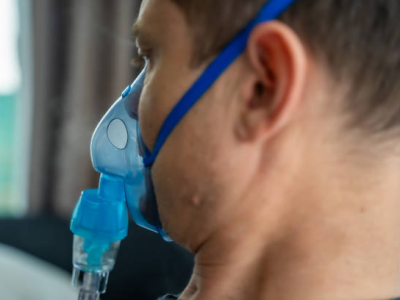Demographics, underlying conditions tied to worse COVID in health workers
Today's Morbidity and Mortality Weekly Report (MMWR) provides updated information from voluntary reports on 100,570 healthcare personnel (HCP) with COVID-19 from February to July that shows variations in risk, including higher death rates in minority workers.
The authors analyzed data from standardized case report forms containing HCP demographic characteristics, including newly reported occupation type and job setting, underlying medical conditions, hospitalizations, and intensive care unit (ICU) admissions and deaths.
The number of HCP with COVID-19 increased tenfold since first described in April, with 641 deaths. Demographic factors and preexisting conditions were predictive of poorer outcomes. Infected HCP who were older, male, Asian, or black—or had one or more underlying medical conditions—had higher death rates.
"Long-standing inequities in social determinants of health can result in some groups being at increased risk for illness and death from COVID-19, and these factors must also be recognized and addressed when protecting essential workers in the workplace, at home, and in the community," the report states.
The most commonly reported job settings for HCP COVID-19 cases were nursing homes and residential care facilities—67% of cases with reported job settings—with nurses representing the most common occupation—30% of cases with known occupation type.
The report does not identify the source of HCP exposure or infection but highlights the critical need for continued surveillance of HCP environments, personal protective equipment access and training, universal use of masks in work and community settings, and observing physical distancing guidelines to minimize the risk to HCPs and patients.
Sep 25 MMWR report
COVID-19 during pregnancy not associated with complications in infants
A Swedish study of pregnant COVID-19 patients giving birth at Karolinska University Hospital in Stockholm from Mar 25 to Jul 24 found a higher likelihood of labor complications, but no significant differences in outcomes in newborns compared with COVID-19–negative women.
Published in JAMA this week, the study tested women in labor using reverse-transcriptase polymerase chain reaction (RT-PCR) on nasopharyngeal swabs to identify COVID-19–positive patients. Among 2,682 women, 156 (5.8%) were SARS-CoV-2 positive and 65% of those who tested positive were asymptomatic—meaning they had no symptoms compatible with COVID-19.
COVID-19–positive laboring women were more likely to experience preeclampsia—a serious labor complication characterized by high blood pressure and protein in the urine—and less likely to undergo labor induction for reasons that are yet unclear. Lead author Mia Ahlberg, RNM, PhD, of Karolinska said in a university news release, "One possible reason for the latter is that both preeclampsia and COVID-19 impact several organs and can present similar symptoms."
No significant differences were noted for other maternal outcomes (mode of delivery, postpartum hemorrhage, and preterm birth) between COVID-19–positive and –negative groups. Neonatal outcomes, including 5-minute Apgar scores, birth weight for gestational age, prevalence of birth defects, and stillborn births, did not differ significantly between the groups.
The study authors write, "In light of other accumulating data, it is already clear that COVID-19 is less severe in pregnancy than the 2 previous coronavirus infections: severe acute respiratory syndrome–related coronavirus (SARS) and Middle East respiratory syndrome–related coronavirus (MERS). Nevertheless, there are reports of pregnant persons requiring critical care, and there have been other reports of both mother and infant deaths in association with COVID-19."
While encouraging, the study was limited by the number of laboring women presenting with COVID-19 symptoms, which restricts the ability to generalize to larger populations and different locations.
Ahlberg says, "Larger studies should be conducted to be able to identify if women with symptoms and different degrees of symptoms constitute a risk group for adverse outcomes such as preterm birth."
Sep 23 JAMA study
Sep 23 Karolinska Institutet news release
Children, adolescents less susceptible to COVID-19, meta-analysis finds
A systemic review and meta-analysis in JAMA Pediatrics today found that children and adolescents have a significantly lower susceptibility to COVID-19 than adults do. Previous studies have reached similar conclusions, but this study pools data from 32 studies to get a clearer overall picture.
Children and adolescents younger than 20 years were nearly half as likely to be infected than adults (odds ratio, 0.56; 95% confidence interval, 0.37 to 0.85) in the review of studies that involved contact tracing or population screening through Jul 28 and included a total of 41,640 children and adolescents and 268,945 adults. The decreased risk of infection was most pronounced in children younger than 10 to 14 years, "with adolescents appearing to have similar susceptibility to adults," the study authors write.
Infection and transmission rates in children have important implications for public health decisions regarding lockdowns and school closures. While available studies show evidence of transmission of SARS-CoV-2, the virus that causes, COVID-19, from children to other age-groups, the review contained relatively few data on transmission and was unable to elucidate a clear role.
The authors conclude, "Preliminary evidence suggests that children have a lower susceptibility to SARS-CoV-2 infection compared with adults, but the role that children and adolescents play in transmission of this virus remains unclear."
In a commentary in the same publication, Saul Faust, MD, writes, "In spite of everything we have known and understood about respiratory viral infections to date, it does now appear that children overall are relatively less susceptible to becoming infected as well [as] having less severe infection itself. How infectious children are once they have acquired the SARS-CoV-2 virus remains unclear. Studies have confirmed children carry viable virus in their nasopharynx, so children are almost certainly infectious."
Faust advocates for prioritizing the needs of children and young people in policy decisions around reopening of society, including ongoing studies of the role of transmission in schools, and making data-driven decisions that avoid politicization and take local community data, resources, and specific community needs into account.
Sep 25 JAMA Pediatrics study and commentary











